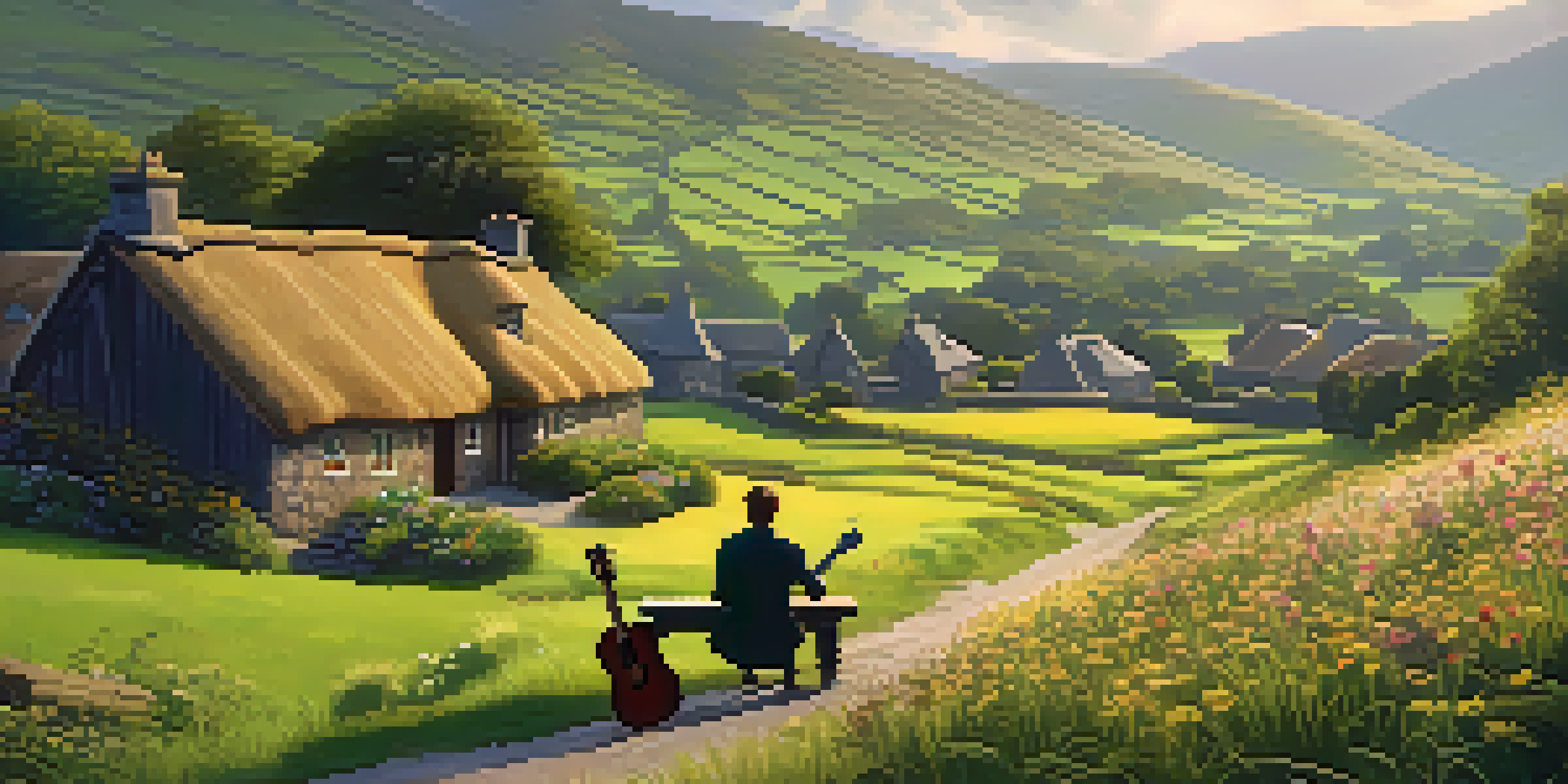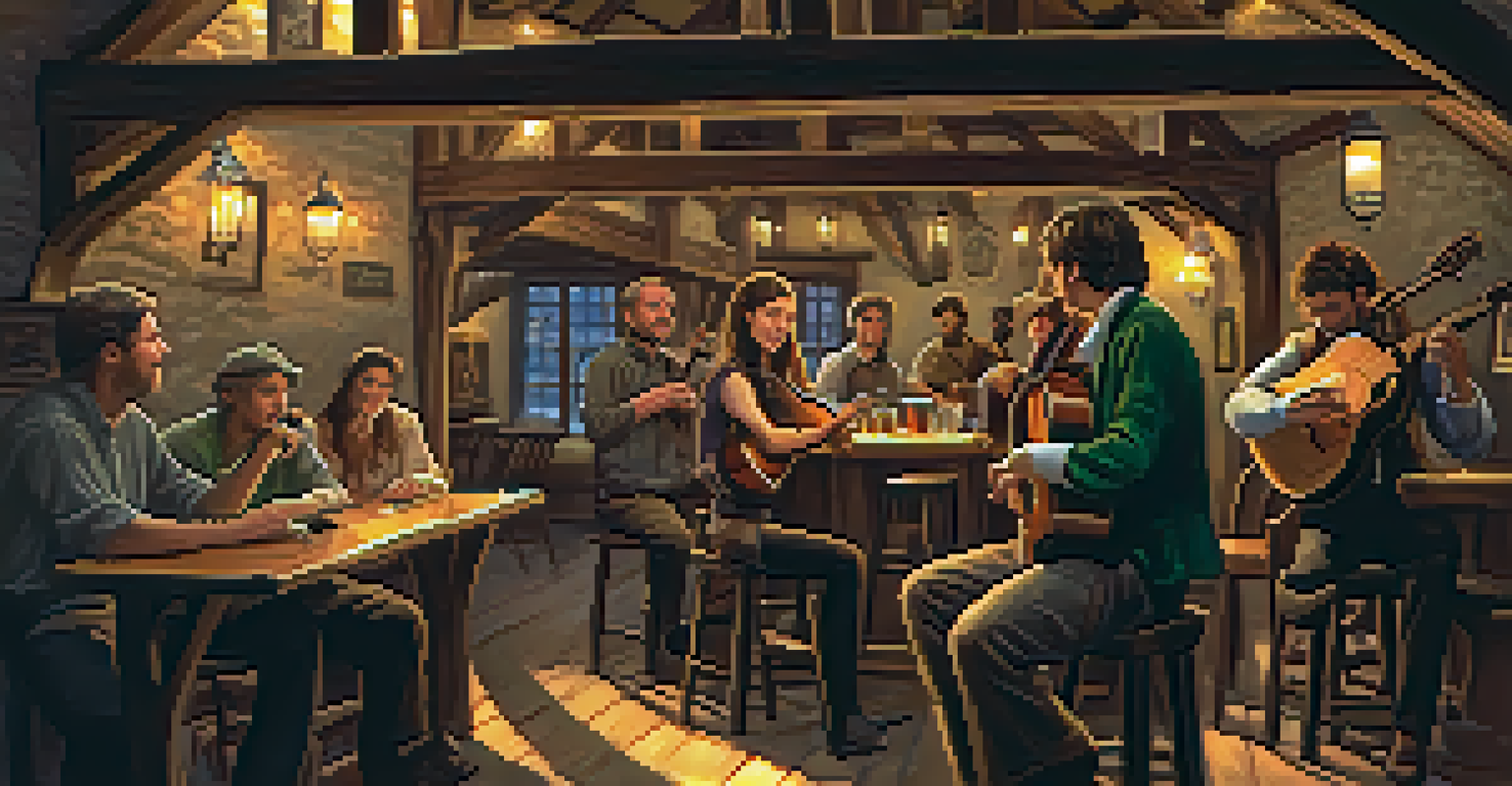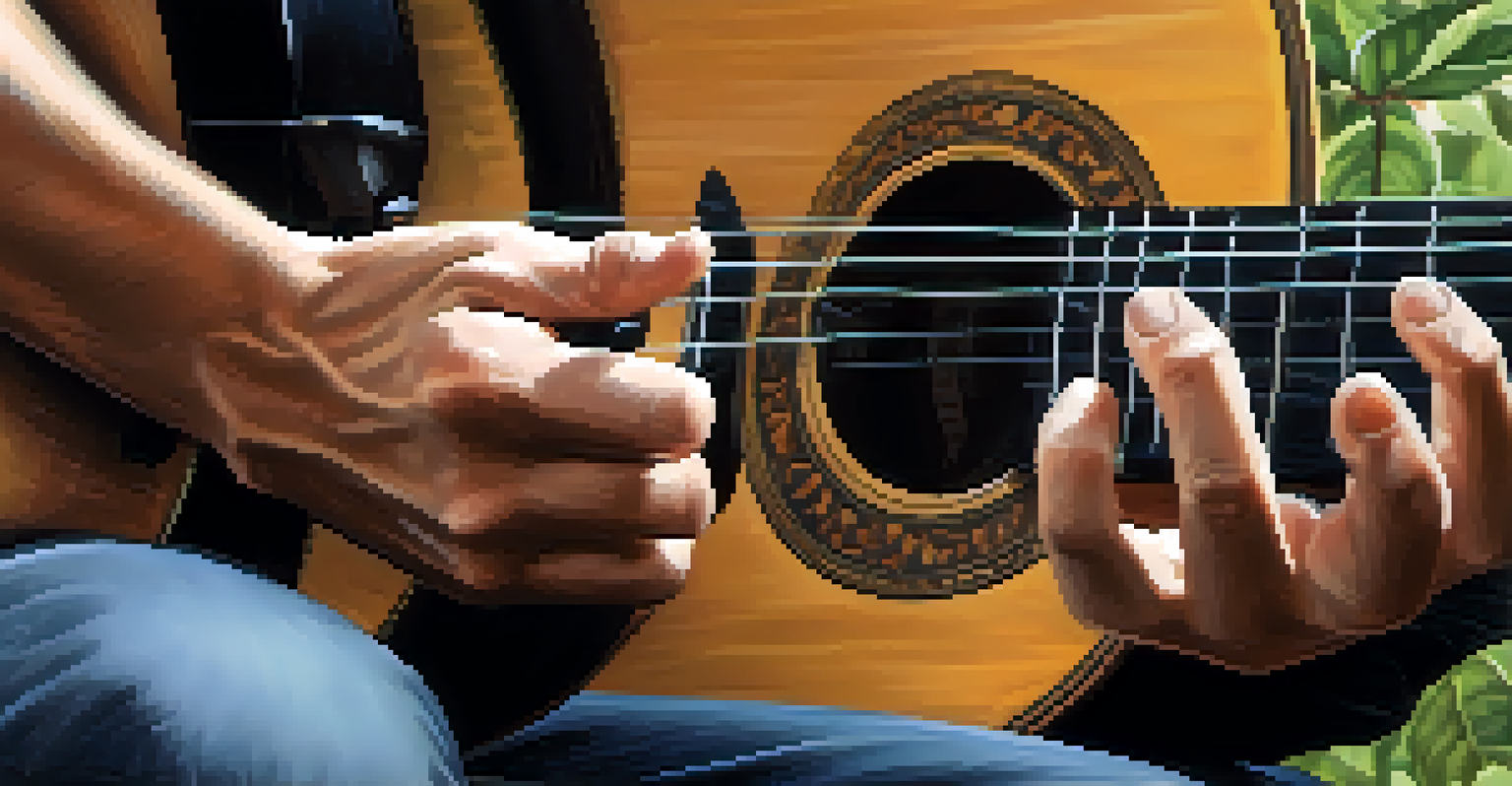Celtic Guitar Traditions: The Sound of Ireland and Scotland

The Roots of Celtic Guitar Music in Ireland and Scotland
Celtic guitar traditions are deeply intertwined with the rich musical heritage of Ireland and Scotland. The guitar, while not the original instrument of choice in traditional Celtic music, has carved a unique niche in recent decades. With its ability to blend seamlessly with other instruments, the guitar has become a staple in folk bands and solo performances alike.
Music can change the world because it can change people.
Historically, instruments like the fiddle and bagpipes ruled the Celtic music landscape. However, the introduction of the guitar brought a fresh sound that allowed for new interpretations of classic melodies. This shift opened doors for guitarists to explore and adapt traditional tunes, making them accessible to a broader audience.
Today, both countries celebrate their unique adaptations of the guitar, with each style reflecting the local culture and influences. The result is a rich tapestry of sounds that tell the stories of their people through music.
Key Instruments in Celtic Guitar Music
When discussing Celtic guitar music, it's essential to highlight the various types of guitars used. While acoustic guitars are the most common, other variations like the bouzouki and tenor guitar also play significant roles. Each of these instruments contributes a distinct tone and character to the music, enhancing the overall experience.

The bouzouki, for example, has a bright, ringing sound that complements traditional Celtic melodies beautifully. Often tuned in fifths, it provides a rhythmic backbone and harmonic support that enriches the guitar's melodies. Similarly, the tenor guitar, with its shorter scale and bright tone, adds a unique flavor to the mix.
Celtic Guitar's Evolving Role
The guitar has become an integral part of Celtic music, adapting traditional melodies and enriching the genre.
These instruments, combined with the traditional acoustic guitar, create a vibrant soundscape that is both familiar and refreshing. The interplay between these different guitars allows musicians to explore a variety of styles and techniques, resulting in a dynamic musical experience.
Traditional Styles and Techniques in Celtic Guitar Playing
Celtic guitar playing is characterized by several traditional styles and techniques that have developed over the years. Fingerpicking, for instance, is a common technique that allows guitarists to create intricate melodies while maintaining a strong rhythmic foundation. This method is often used in both solo performances and group settings, showcasing the player's skill and creativity.
The guitar is a miniature orchestra in itself.
Another popular technique is the use of alternate tunings, which can evoke a distinct sound that resonates with Celtic music's ethereal quality. Guitarists often experiment with different tunings to find the perfect resonance for a particular tune or song. This exploration leads to unique interpretations and personal expressions of traditional melodies.
The combination of fingerpicking and alternate tunings allows musicians to capture the essence of Celtic music while adding their personal flair. This blend of tradition and innovation is what keeps the Celtic guitar tradition alive and evolving, ensuring it remains relevant for future generations.
The Influence of Irish and Scottish Folk Music
Irish and Scottish folk music has had a profound impact on the development of Celtic guitar traditions. Many guitarists draw inspiration from traditional tunes, adapting them for guitar performance. This practice not only preserves the music's heritage but also introduces it to new audiences, fostering a deeper appreciation for its roots.
Moreover, as the popularity of Celtic music grew globally, so did the influence of folk traditions from other cultures. This exchange of ideas has led to the emergence of hybrid styles that incorporate elements from various musical genres, further enriching the Celtic guitar landscape. For instance, some guitarists blend traditional Celtic melodies with modern folk or even rock elements, creating a fresh sound.
Influence of Folk Music
Irish and Scottish folk traditions significantly shape Celtic guitar music, inspiring new interpretations and hybrid styles.
Ultimately, the influence of Irish and Scottish folk music on the guitar has created a vibrant and evolving tradition. It highlights the power of music to transcend borders and connect people through shared cultural experiences.
Celebrated Celtic Guitarists and Their Contributions
Numerous talented guitarists have emerged from the Celtic music scene, each contributing their unique styles and techniques. One of the most celebrated is Gary Moore, known for his exceptional guitar skills and ability to blend rock with traditional Irish music. His work has inspired countless musicians and helped bring Celtic guitar to a broader audience.
Another noteworthy figure is John Doyle, renowned for his intricate fingerpicking and innovative arrangements of traditional tunes. Doyle's ability to weave complex melodies with rich harmonies has earned him recognition as a leading figure in the Celtic guitar community. His influence continues to shape the way contemporary musicians approach this genre.
These artists, among many others, have played a vital role in the evolution of Celtic guitar music. Their dedication and creativity not only preserve traditional sounds but also push the boundaries of what's possible, ensuring that the Celtic guitar tradition remains vibrant and relevant.
Celtic Guitar in Contemporary Music
In recent years, the Celtic guitar tradition has found its way into contemporary music, attracting a new generation of listeners. Many artists are incorporating Celtic elements into various genres, from pop to indie rock, showcasing the guitar's versatility. This fusion of styles has helped to breathe new life into traditional melodies, making them more accessible to modern audiences.
Additionally, the rise of social media has played a significant role in promoting Celtic guitar music. Platforms like YouTube and Instagram allow musicians to share their interpretations of traditional tunes, reaching fans far and wide. This exposure has fostered a sense of community among musicians and listeners, encouraging collaboration and experimentation.
Future of Celtic Guitar
With a new generation of musicians and modern technology, the Celtic guitar tradition is set to thrive and evolve.
As a result, we are witnessing a beautiful evolution of the Celtic guitar tradition. By embracing both its roots and contemporary influences, musicians are ensuring that this rich musical heritage continues to thrive.
The Future of Celtic Guitar Traditions
As we look to the future, the Celtic guitar tradition is poised for continued growth and evolution. With a new generation of musicians eager to explore and experiment, we can expect to see fresh interpretations of classic tunes alongside innovative compositions. This dynamic landscape will keep the tradition alive while also inviting new influences and ideas.
Moreover, as global music trends continue to evolve, the integration of technology in music production and distribution will further enhance the reach of Celtic guitar music. Online platforms, digital collaborations, and virtual performances are just a few ways musicians can connect with audiences worldwide, breaking down geographical barriers.

Ultimately, the future of Celtic guitar traditions is bright. With the passion and creativity of new artists, we can anticipate a vibrant tapestry of sounds that honors the past while boldly stepping into the future.